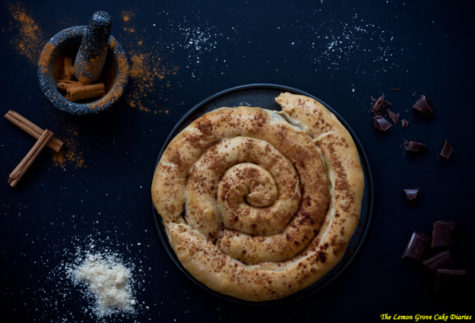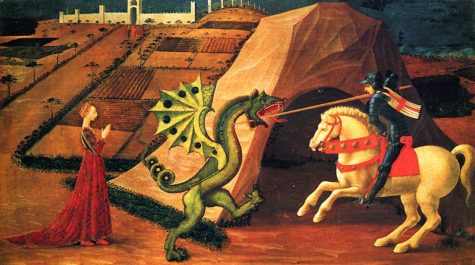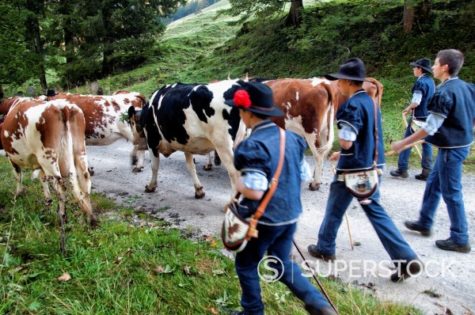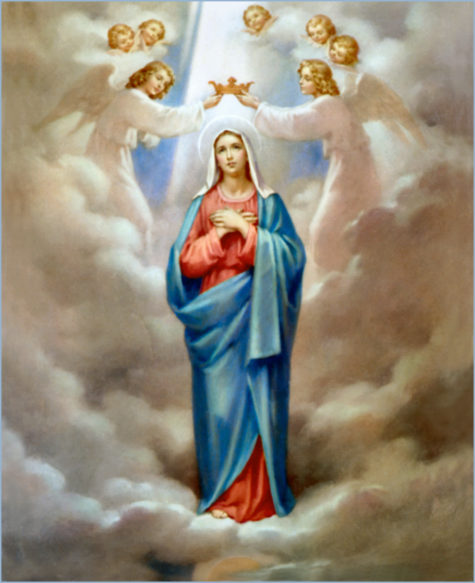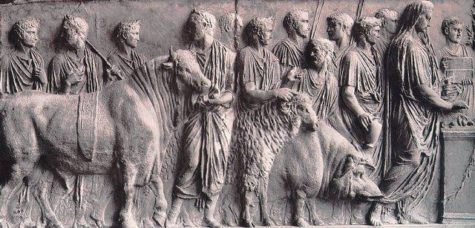May
Oats and oat cakes are still used today in Beltane celebrations, especially in Scotland where the tradition originated. Therefore, oats have been widely accepted as a very appropriate Beltane food, good for fertility and luck. This recipe for Farls, was popular in northern Ireland and Scotland, incorporating the ever-popular potatoes as well (with the oats!). Best of all, it’s gluten free!
Ingredients:
- 3 cups real mashed potatoes
- 2 cups dry oats
- 2 tablespoons butter or margarine
- 1/2 teaspoon cornstarch
- 1/2 teaspoon baking powder
- 1/8 teaspoon salt
- Pinch of pepper
- Pinch of rosemary (optional)
Directions:
Soak the oats in warm water for 15 to 20 minutes. (Use the amount of water your oats package tells you to use as if for cooking.) Drain the oats if there is extra water at the end of their soaking, then mix the potatoes and other ingredients into the bowl. Knead it together until a dough forms. If it’s still too moist, add flour until it can be picked up and shaped. Form into round patties. Fry in hot vegetable oil until lightly browned and serve immediately.
NOTE:
They seem to cook best if you put them in the pan and don’t smush them down with the spatula on their first side. When you flip them over, that’s when you can smush them down a little, because they’ve got a cooked surface that won’t get stuck to your spatula.
Yield: 8 servings
Source: Sabbats
The serpent or snake is a symbol of May because of its ancient association with fertility. This association dates back to the earliest Pagan religions, and though later religions cropped up casting the serpent in a deceitful role, the Earth religions still honor the snake as a blessed creature this time of year. Its way of slithering along the body of the Earth made it an obvious phallic symbol, and May Day is full of such symbols (the maypole being the most well-known one).
The holiday of Beltane comes on the first of May and encourages those who celebrate life to greet spring’s bounty with festivities, and that of course always involves food. This snake-shaped cake, incorporating appropriate seasonal ingredients, is a wonderful addition to a party table.
Ingredients:
- 3/4 cup sugar
- 1/2 teaspoon ground cloves
- 1 1/2 teaspoons ground nutmeg
- The zest of one orange
- 1 teaspoon baking soda
- 3/4 teaspoon salt
- 4 1/2 cups plus 2 tablespoons flour
- 1/2 cup butter
- 3/4 cup plus 3 tablespoons honey, boiling
- 1/2 cup strong espresso coffee
- 1 egg
- 1/3 cup amaretto or rum
- /3 cup wild cherry or raspberry jam
- Garnish: 4 coffee beans and some candied orange peel, in slices
Directions:
Preheat the oven to 400º F. Mix the sugar, spices, zest, soda, and salt into the flour in a bowl. Cut in the butter until little pebbles form. Pour in the honey, coffee, and liqueur, and mix in the egg. Mix the batter until everything is evenly distributed and you have a nice soft dough. Let it cool.
Turn it out onto a floured surface and divide in half. Roll one half into an 18-inch rope. Make a deep trough down the center and fill it with jam. Seal it by bringing the edges up over the jam and pressing the seam together. Then flip it seam-side-down onto a parchment-paper-covered baking sheet. Arrange the snake in a circle, but don’t press the ends together. Make one end tapered like the end of a snake’s tail, and make the other end triangular like a snake’s head.
Press in coffee beans for eyes and orange rind for scales if desired. Repeat this process with the other half of the dough and bake them for 30 minutes.
Yield: 2 snake cakes.
Source: Beltane, by Grimassi
This is a very crusty and somewhat dry bread that is incredibly delicious and almost pastry-like in its sweetness. It is ideal for May Day/Beltane celebrations.
Ingredients:
- 1 envelope active dry yeast
- 1/3 cup real maple syrup
- ¼ cup warm water (105ºF-115ºF)
- 3 cups flour
- 3 tablespoons packed brown sugar
- 1 tablespoon baking powder
- ½ teaspoon salt
- ¼ cup shortening
Directions:
Dissolve yeast in the water. Mix 1 ½ cups of the flour with the brown sugar, baking powder, and salt. Cut in shortening. Dissolve the syrup into the yeast mix too. Add yeast mix to the flour mix; stir. Add flour until dough is easy to handle. Turn onto a floured surface and knead for 1 minute. Cover and let rise for 15 minutes. Form into round, place on cookie sheet. Let rise in a warm spot for 30 minutes.
Preheat oven to 350ºF. Slice pleasing image into bread top. Bake for 30 minutes. Bread is done when it sounds hollow when tapped. Loaf can be brushed with syrup or butter during last 5 minutes of baking.
NOTE: Your bread will have trouble rising if the syrup is too cold! Warm up the syrup if it has been in the refrigerator, it should be room temperature or warmer.
Yield: 1 loaf
Source: A Kitchen Witch’s Cookbook
- 1 cup sweet woodruff
- 2 bottles rose’ wine
- 4 dozen rose petal ice cubes
- 1 quart strawberries
- 1 quart chopped peaches
- 1 cup sugar
- 1/2 cup white rum
- 2 bottles champagne
- 1 bottle white wine
- 1 liter lemon-lime soda
Two weeks before serving: clean woodruff and pack into one bottle of wine. Cork and let sit.
The day before serving: make four dozen ice cubes by placing rose petals in the compartments before adding water. Freeze until solid.
Hull and wash the strawberries. Slice. Mix peaches and strawberries. Add sugar and rum. Marinate overnight.
An hour before serving: Strain woodruff out of wine and discard leaves. Mix champagne, all remaining wine, lemon-lime soda, and fruit in a large bowl. Stir.
Add ice cubes 15 minutes before serving. Serves 20.
Dancing with the Sun
by Jasmine Yalenorn
Saint George’s Day is celebrated on April 23, the traditionally accepted date of the saint’s death in AD 303. For those Eastern Orthodox Churches which use the Julian calendar, this date currently falls on the day of 6 May of the Gregorian calendar. In Turkish culture the day is known as Hıdırellez or Xıdır Nəbi and is symbolic of spring renewal.
It is also believed to be a magical day when all evil spells can be broken. It was believed that the saint helps the crops to grow and blesses the morning dew, so early in the morning they walked in the pastures and meadows and collected dew, washed their face, hands and feet in it for good luck and even in some rural parts of Bulgaria it was a custom to roll in it naked.
In Romania, people celebrate St. George – ‘Sfantul Gheorghe’ – and in certain regions, including Bucovina, people will still plant cut willow branches in freshly cut earth and place them at the entrances to their homes.
Many Christian denominations in Syria celebrate St George’s Day, especially in the Homs Governorate. They do this by dressing small children as dragons and chasing them through the streets whilst beating them with clubs and batons. It is a very special time of year, after the beatings folks will enjoy a sit down dinner and dancing.
Saint George’s Day is the feast day of Saint George as celebrated by various Christian Churches and by the several nations, kingdoms, countries, and cities of which Saint George is the patron saint.
Since Easter often falls close to Saint George’s Day, the church celebration of the feast may be moved to accommodate the Easter Festivities. Similarly, the Eastern Orthodox celebration of the feast moves accordingly to the first Monday after Easter or, as it is sometimes called, to the Monday of Bright Week.
Some Orthodox Churches have additional feasts dedicated to St George. The country of Georgia celebrates the feast of St. George on April 23, and, more prominently, November 10 (Julian calendar), which currently fall on May 6 and November 23 (Gregorian calendar), respectively.
 St George’s Day was a major feast and national holiday in England on a par with Christmas from the early 15th century. The Cross of St. George was flown in 1497 by John Cabot on his voyage to discover Newfoundland and later by Sir Francis Drake and Sir Walter Raleigh. In 1620 it was the flag that was flown on the foremast of the Mayflower when the Pilgrim Fathers arrived in Plymouth, Massachusetts.
St George’s Day was a major feast and national holiday in England on a par with Christmas from the early 15th century. The Cross of St. George was flown in 1497 by John Cabot on his voyage to discover Newfoundland and later by Sir Francis Drake and Sir Walter Raleigh. In 1620 it was the flag that was flown on the foremast of the Mayflower when the Pilgrim Fathers arrived in Plymouth, Massachusetts.
The tradition of celebration St George’s day had waned by the end of the 18th century after the union of England and Scotland. Nevertheless, the link with St. George continues today, for example Salisbury holds an annual St. George’s Day pageant, the origins of which are believed to go back to the 13th century. In recent years the popularity of St. George’s Day appears to be increasing gradually. Today, St. George’s day may be celebrated with anything English including morris dancing and Punch and Judy shows.
A traditional custom on St George’s day is to wear a red rose in one’s lapel, though this is no longer widely practiced. Another custom is to fly or adorn the St George’s Cross flag in some way: pubs in particular can be seen on April 23 festooned with garlands of St George’s crosses. It is customary for the hymn “Jerusalem” to be sung in cathedrals, churches and chapels on St George’s Day, or on the Sunday closest to it. Traditional English food and drink may be consumed.
In the Valencian city of Alcoi, Saint George’s Day is commemorated as a thanksgiving celebration for the proclaimed aid the Saint provided to the Christian troops fighting the Muslims in the siege of the city. Its citizens commemorate the day with a festivity in which thousands of people parade in medieval costumes, forming two “armies” of Moors and Christians and re-enacting the siege that gave the city to the Christians.
The Serbian St George’s Day is called Đurđevdan and is celebrated on 6 May every year, as the Serbian Orthodox Church uses the Julian, Old Style calendar. Đurđevdan is also celebrated by both Orthodox and Muslim Romani and Muslim Gorani. Đurđevdan is celebrated, especially, in the areas of Raška in Serbia, and is marked by morning picnics, music, and folk dances.
In Russia, St George’s Day (Гергьовден, Gergyovden) is a public holiday that takes place on 6 May each year. It is possibly the most celebrated name day in the country. A common ritual is to prepare and eat a whole lamb, which is an ancient practice possibly related to Slavic pagan sacrificial traditions and the fact that St George is the patron saint of shepherds.
A Protective Blessing Ritual for Saint George’s Day:
In many communities, Saint George’s Day was the day animals were lead out into the field, thus protective, blessing rituals abound. Here’s one:
- Lead all healthy animals three times around the perimeter of their field, barn or home, always in a sunwise direction.
- The person leading the parade carries a lit torch.
- The person bringing up the rear holds an open padlock in one hand, the key in the other hand.
- After the third round, the animals are lead back into the barn.
- Turn the key in the lock.
- Throw the key into a river or stream, while preserving the now permanently locked padlock.
Dragons and Dragon’s Blood:
St. George is credited with having slain a fearsome dragon to save the life of a virgin. The Dragon means different things to different peoples. In some medieval traditions it is linked with the devil or Satan, hence the carvings and windows depicting St George, (or sometimes St Michael), slaying one.
But the Dragon has far older associations in which it represents the life force of the land. In the Craft we often refer to the Earth Dragon, a great coiled beast who sleeps within the Earth and who can be called upon to work healing for the planet. The Earth Dragon is often invoked in cases of potential ecological danger. King Arthur’s father was named Uther Pendragon, and it is thought that his name shows that he was a defender of the land. The Dragon is a symbol of Wales and appears on the country’s flag.
Dragon’s blood is not the blood of some luckless lizard, but the resin of the palm calimus draco. Magically it is used for spells of protection, exorcism and sexual potency. Added to incenses it increases their potency and drives away all negativity. On its own Dragon’s blood can be burnt at an open window to secure a lover’s return, and a piece of the resin placed under the mattress is said to cure impotence. In the past Dragon’s Blood was used medicinally to cure diarrhoea, dysentery and even syphilis. Like many other resins it is also used to stop bleeding wounds.
Sources:
May 30 is celebrated as the Feast of the Queen of Heaven. Queen of Heaven, lovely goddess of May, fully grown and gloriously enthroned in pagan and Christian times. May honors the Blessed Virgin Mary, who is the modern-day Queen of Heaven, though somewhat demoted in status from her original divinity.
Have you noticed that it was always Mary who caused the miracles, who appeared to children – as at Lourdes and Fatima? the Queen of Heaven is a hard-working woman, and we light white candles to her. Praise active womanhood wherever you are and all will be well.
Calling upon the Queen of Heaven for aid in times of need is such a universal practice, that I can’t help but think it must be powerful and effective. If you’d like to try it for yourself, here is a prayer to Our Mother of Perpetual Help:
O Mother of Perpetual Help, grant that I may ever invoke Thy most powerful name, which is the safeguard of the living and the salvation of the dying.
O Purest Mary, O Sweetest Mary, let Thy name henceforth be ever on my lips. Delay not, O Blessed Lady, to help me whenever I call on Thee, for, in all my needs:
(name your request for help)
In all my temptations I shall never cease to call on Thee, ever repeating Thy sacred name, Mary, Mary
(again make your request for help).
O what consolation, what sweetness, what confidence, what emotion fills my soul when I pronounce Thy sacred name, or even only think of Thee. I thank God for having given Thee, for my good, so sweet, so powerful, so lovely a name. But I will not be content with merely pronouncing Thy name: let my love for Thee prompt me ever to hail Thee, Mother of Perpetual Help. Amen.
(Now recite nine Hail Marys)
From: The Grandmother of Time and other sources.
May 29 is the date given for the Roman festival of Ambarvalia, or the Corn Mother Festival. The Goddess Ceres, the food giver, now has her corn festival, which was the cause of a great deal of festivity. At these festivals they sacrificed a bull, a sow, and a sheep, which, before the sacrifice, were led in procession thrice around the fields. It is from this practice that the name Ambarvalia comes Ambio meaning I go round and Arvum meaning field.
These feasts were of two kinds, public and private. The private were solemnized by the masters of families, accompanied by their children and servants, in the villages and farms out of Rome. Celebrants gathered to walk around the freshly plowed fields in joyous processions, wearing crowns of oak leaves and singing hymns to the Earth.The public festivals were celebrated in the boundaries of the city, and in which twelve fratres arvales walked at the head of a procession of the citizens, who had lands and vineyards at Rome. During the procession, prayers would be made to the goddess.
Gods of our fathers, we purify the fields, we purify the farming folk.
O gods, drive evil outside our boundaries.
Let the crop not mock the harvest with deceiving grasses
nor the swift wolves scare the slower lamb.
~Tibullus
 There is a festival in Japan on May 28 during which vendors sell insects in tiny bamboo cages. Those who purchase the diminutive pets keep them in or near the house during the summer months so that they can hear their songs in the evening. Then, on a day in late August or early September, they gather in public parks and at temples or shrines to set the insects free. When the creatures realize they have been released, the former captors listen to them burst into their individual sounds.
There is a festival in Japan on May 28 during which vendors sell insects in tiny bamboo cages. Those who purchase the diminutive pets keep them in or near the house during the summer months so that they can hear their songs in the evening. Then, on a day in late August or early September, they gather in public parks and at temples or shrines to set the insects free. When the creatures realize they have been released, the former captors listen to them burst into their individual sounds.
The custom of freeing the insects, also known as the Insect-Hearing Festival, is more common in the countryside. Although no one seems to know its exact origin, it is reminiscent of Italy’s Festa del Grillo, where crickets are purchased in cages and kept as good luck tokens or harbingers of spring.
A picturesque rite passed down from feudal days, this festival is held in temple and shrine precincts, public parks, and many gardens. People gather in these chosen spots where they take insects in tiny bamboo cages, some purchased from insect vendors for this ceremony, and set these insects free.
As part of the ceremony, the liberator waits for the insect to get its bearing, realize its freedom, then listen to it as it chirps.
Note: This post was put together by Shirley Twofeathers for Gypsy Magic, and moved to its new home here at shirleytwofeathers.com. You may repost and share it only if you give me credit and a link back to this website. Blessed be.
May 25 is the Chinese and Japanese Celebration of the Tao – The Mother of the World. In Taoism, a great spiritual tradition of the East, the Goddess is perceived as the mother of the world, the Way to the heart.
On this day, burn incense to the Goddess and meditate on Divine Harmony. The whole philosophy of the Way (or Tao) in Chinese mysticism is essentially a respect for the truth in nature and her ways. It is also a belief that people must live in harmony with the Way and not destroy or interfere but, rather, flow with it. This, as they say, is:
“Holding fast to the Mother. She is the origin of all things and beings, born before heaven and earth. Silent and void she stands alone, does not change, goes round and does not weary, and is capable of being the mother of the world.”
~Tao Teh Ching
From: The Grandmother of Time
The Mothers of Arles is a French festival that runs from May 24 through May 28. This unique festival celebrating the triple goddess is still alive and well in France, celebrated mostly by gypsies. The “Three Maries of the Sea” recall the ancient goddess of life, death, and beauty. The gypsies gather from all over Europe and carry on their annual celebrations of the triple goddess. Three women dressed up as Mare, Tavobe, and Mary impersonate the goddesses, reaching the shore in boats.
In modern times, Sarah and Salome are the companions of Mary in this trinity. Fancy processions, gypsy weddings, trading of all sorts, fortune-telling, the leaping of cows (a survival from the ancient practice of bull leaping), dancing gypsy style, and candles give these days and nights their wild beauty.
From: The Grandmother of Time

